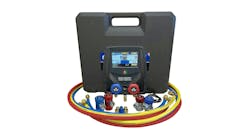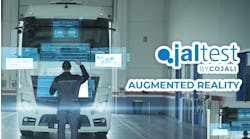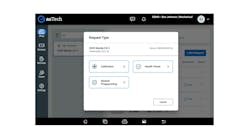Q: Does OSHA permit self-cleaning with compressed air?
A: OSHA Standard 1910.242(b), along with Directive STD 01-13-001 which was issued to clarify Standard 1910.242(b), does not prohibit the use of compressed air for cleaning employees. However, both speak to safety concerns regarding pressure (“reduced to less than 30 psi”) and chip guarding (“effective chip guarding and personal protective equipment”).
Regarding pressure – OSHA wants safety air guns that “prevent back pressure buildup in case the nozzle is obstructed or dead ended,” presumably by the clothing or skin of an employee being cleaned. Since most industrial air compressors operate at pressures between 80-120 psi, shops want to know how they can safely meet this requirement but still have the pressure they need for other operations. Safety air gun manufacturers, such as Guardair, offer practical solutions which is to incorporate safety nozzles that physically prohibit blocking or dead-ending on safety air guns. This approach complies with 1910.242(b) and has withstood the test of time.
Regarding chip-guarding – In addition to meeting the 30 psi pressure requirement, OSHA Standard 1910.242(b) states “and then only with effective chip guarding and personal protective equipment.” ** Again, this part of the regulation does not prohibit the use of compressed air for cleaning employees. OSHA’s concern here is containing airborne chips and particles in a controlled way so they cannot harm employees. Chip guarding requirement can be met by using barriers, baffles, or screens as stated in STD 01-13-001.
Using an air gun is not the preferred method of employee cleaning. This logic is what led Guardair to design the Personnel Cleaning Station (PCS). Running off standard compressed air, the PCS pairs a pneumatic vacuum with a handheld, on-demand, air-agitator brush attachment. When the unit is turned on, the vacuum runs continuously. Using the brush attachment, chips and particles on employee clothing can be safely vacuumed up through the attachment and into the container. The PCS meets both the 30 psi pressure and the chip guarding requirements of 1910.242(b).
**Chip guarding and personal protective equipment is defined as “any method or equipment which will prevent a chip or particle (of whatever size) from being blown into the eyes or unbroken skin of the operator or other workers.”
Information provided by: Guardair Corp.




